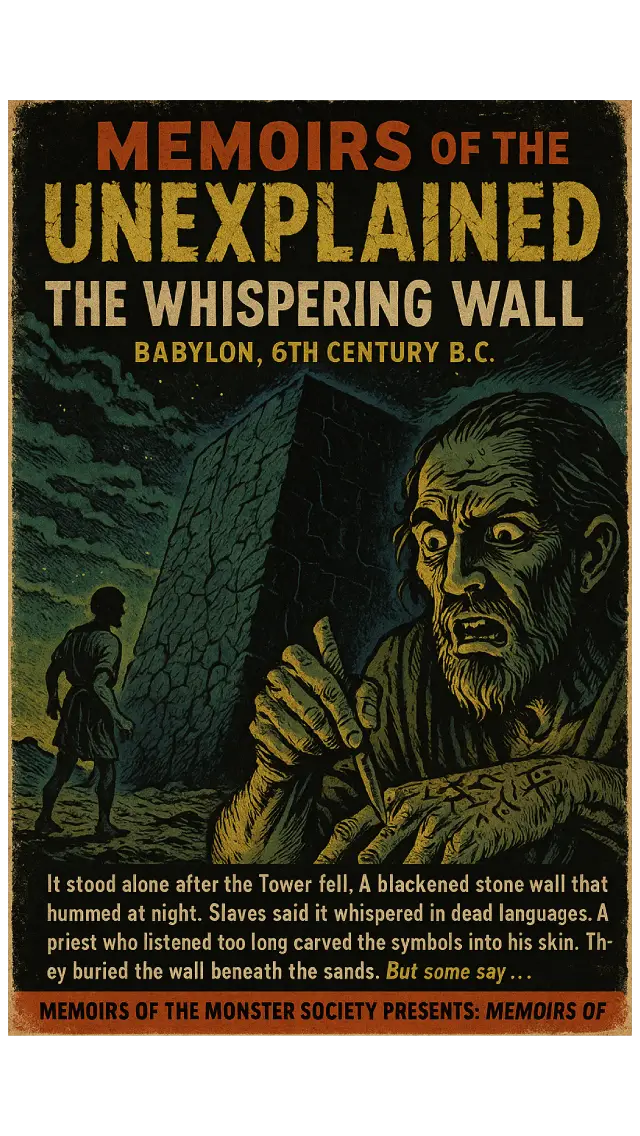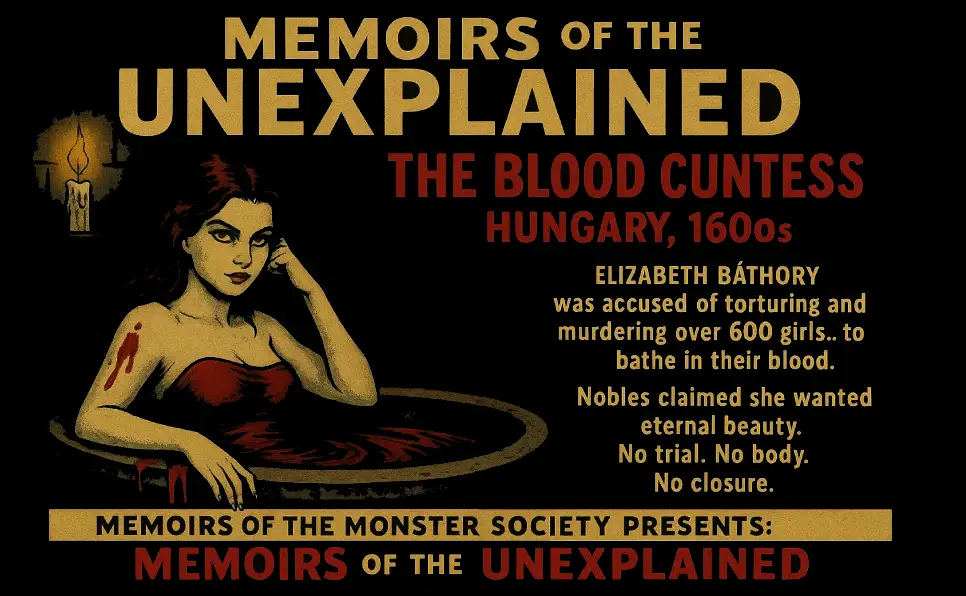You know the story of the Tower of Babel. A proud monument to human ambition, struck down by a vengeful God for its arrogance. The Bible tells us the people were scattered and their language confounded. But what if that wasn’t the end of the story? What if a piece of the Tower survived… and it was cursed?
Hidden within ancient texts and slave narratives from the 6th century B.C. lies a chilling account of one of history’s first and most terrifying cursed archaeological finds. This isn’t a ghost story; it’s a Memoir of the Unexplained. This is the story of the Whispering Wall.
The Lone Sentinel in the Dust
After the divine wrath subsided and the great Tower of Babel lay in a heap of ruin, one structure was said to have remained strangely intact. It wasn’t a grand pillar or a giant stairway to heaven. It was a single, blackened stone wall, standing alone in the wreckage like a grave marker.
While the rest of the rubble was cleared away or crumbled to dust, this wall refused to fall. It was made of a strange, obsidian-like stone that seemed to absorb the sunlight during the day. But it was at night that its true horror revealed itself.
The Hum That Became a Whisper
According to clay tablet fragments attributed to slave overseers, the wall emitted a low, constant hum after sunset—a vibration that could be felt in the bones rather than heard with the ears. Guards assigned to patrol the area would beg for reassignment. They reported feelings of intense dread, migraines, and vivid, waking nightmares.
But the hum was just the beginning. The most trusted (and oldest) slaves began to whisper a new rumor. They claimed the wall wasn’t humming… it was speaking. Its vibrations would coalesce into voices, murmuring in languages no one had ever heard. Dead languages. Forbidden languages. Languages that, according to legend, were spoken before the great scattering at Babel.
The Priest Who Listened Too Long
The ruling priesthood of Babylon caught wind of these slave tales. They dismissed them as superstitious nonsense—until a young, ambitious priest named Elihu decided to investigate the phenomenon himself, believing he could harness its power or decipher its message.
Night after night, Elihu would sit before the blackened wall, listening. His colleagues reported a drastic change in him. He grew pale, withdrawn, and his eyes held a frantic, desperate light. He was seen frantically scribbling on parchment, then later, on his own arms with a stylus.
The climax of this horror came when fellow priests found Elihu in his chambers. He was in a trance-like state, muttering incoherently. His body, from his face to his feet, was covered in a chaotic tapestry of symbols and glyphs—the same unknown, angular patterns he claimed to have heard the wall whispering. He had carved the whispering wall’s legend directly into his own skin.
Buried But Not Silenced
Fearing a divine plague or mass hysteria, the high priests of Babylon took drastic action. They could not destroy the wall, so they ordered it to be hidden from the world. Teams of slaves, working in shifts under the blinding sun, buried the Whispering Wall under tons of desert sand, erasing its location from all official maps and records.
They hoped that would be the end of it.
But some say… the sand wasn’t enough. That on still, windless nights in the Iraqi desert, if you know where to listen, you can still feel a faint hum rising through the dunes. Some Bedouin tribes steer clear of certain areas, speaking of a “Jinn of the Old Words” that will steal your voice and replace it with its own maddening tongue.
Modern archaeologists have long searched for tangible proof of the Tower of Babel, treating the Whispering Wall legend as a mere folktale. But what if they’re looking for the wrong thing? What if the true Babylonian mystery isn’t a tower to the sky, but a wall to the underworld? A real life cursed object that doesn’t just tell a story, but actively seeks to tell its story through you?
This is one ancient artifact that perhaps, should have remained buried.
What unexplained relic should we investigate next? Tell us in the comments below!





